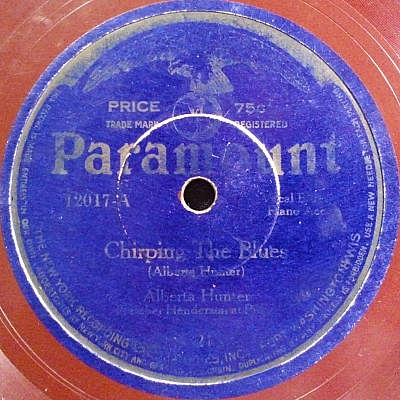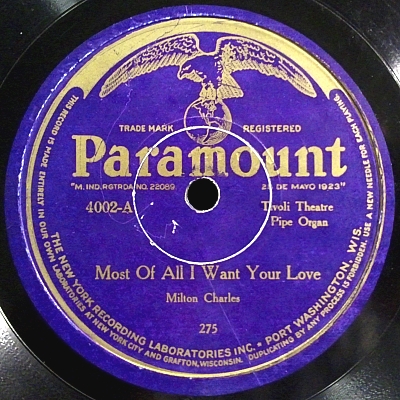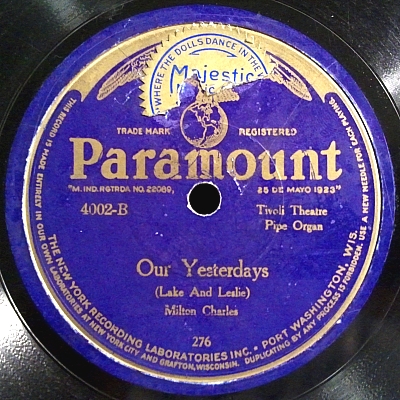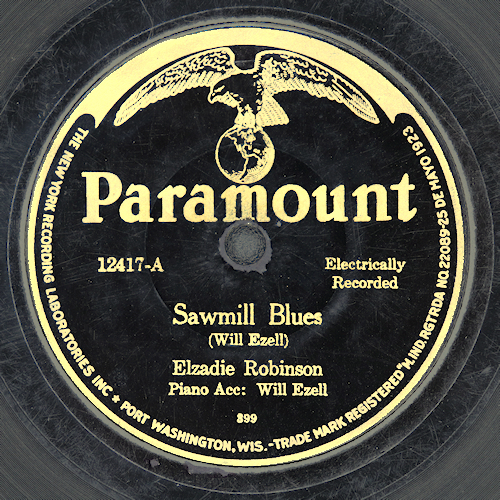 |
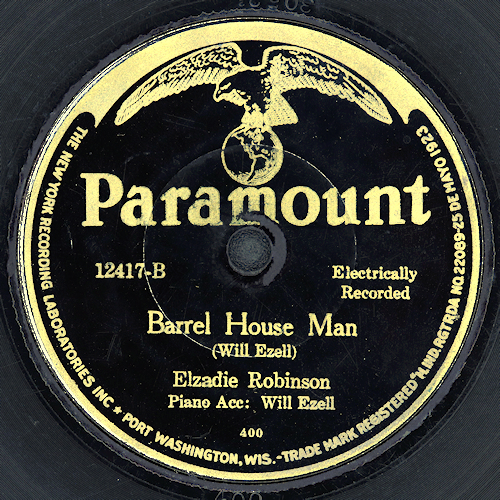 |
| Sawmill Blues |
Barrel House Man |
| Elzadie Robinson (Will Ezell on piano) |
Elzadie Robinson (Will Ezell on piano) |
| Paramount 12417-A |
Paramount 12417-B |
| Matrix# 3054-1 (399), Take 1 |
Matrix# 3053-2 (400), Take 2 |
| ca. October 1926 |
ca. October 1926 |
| Chicago, Illinois |
Chicago, Illinois |
| Note: Extremely worn. |
Note: Extremely worn. Stripped groove at start. |
